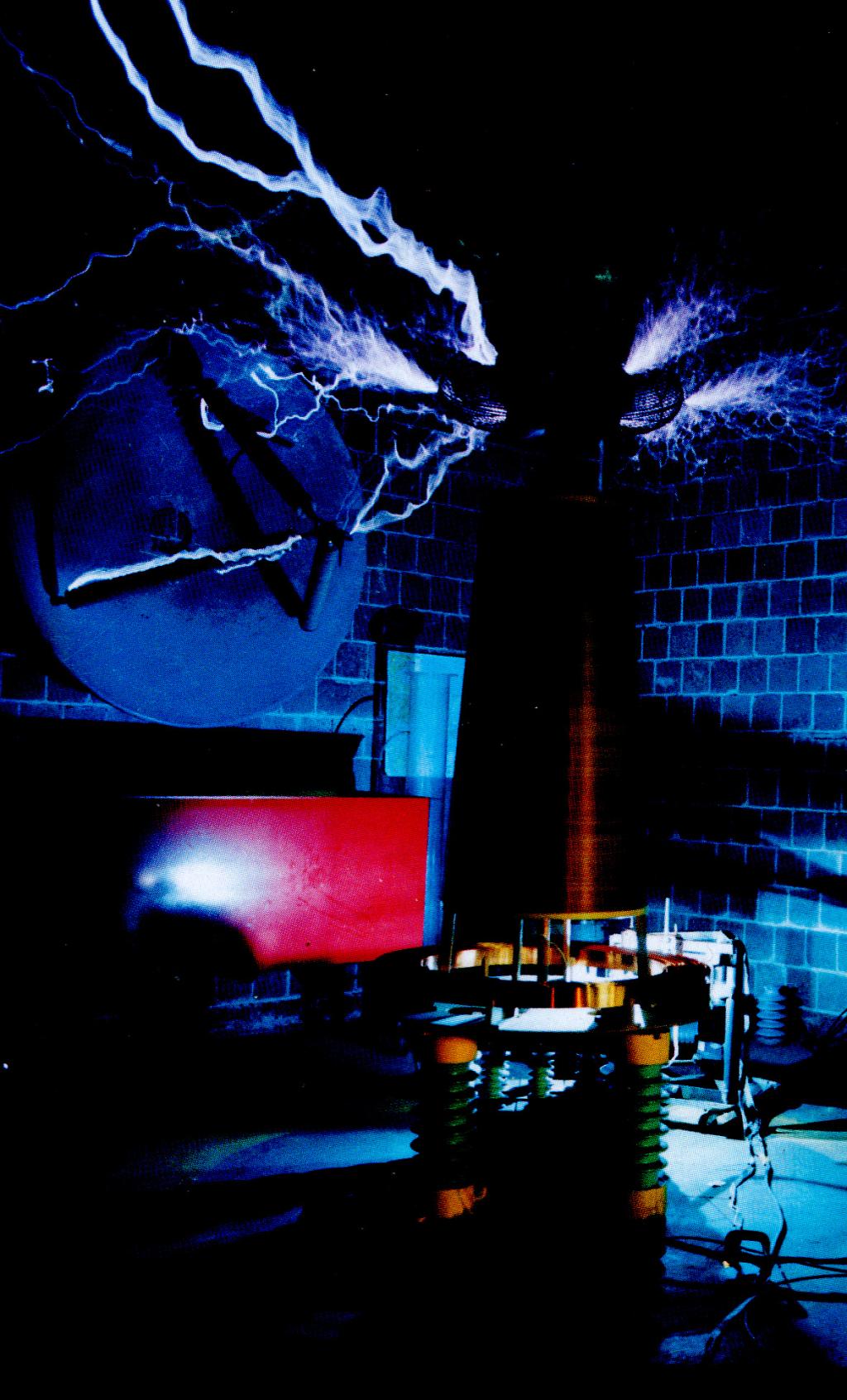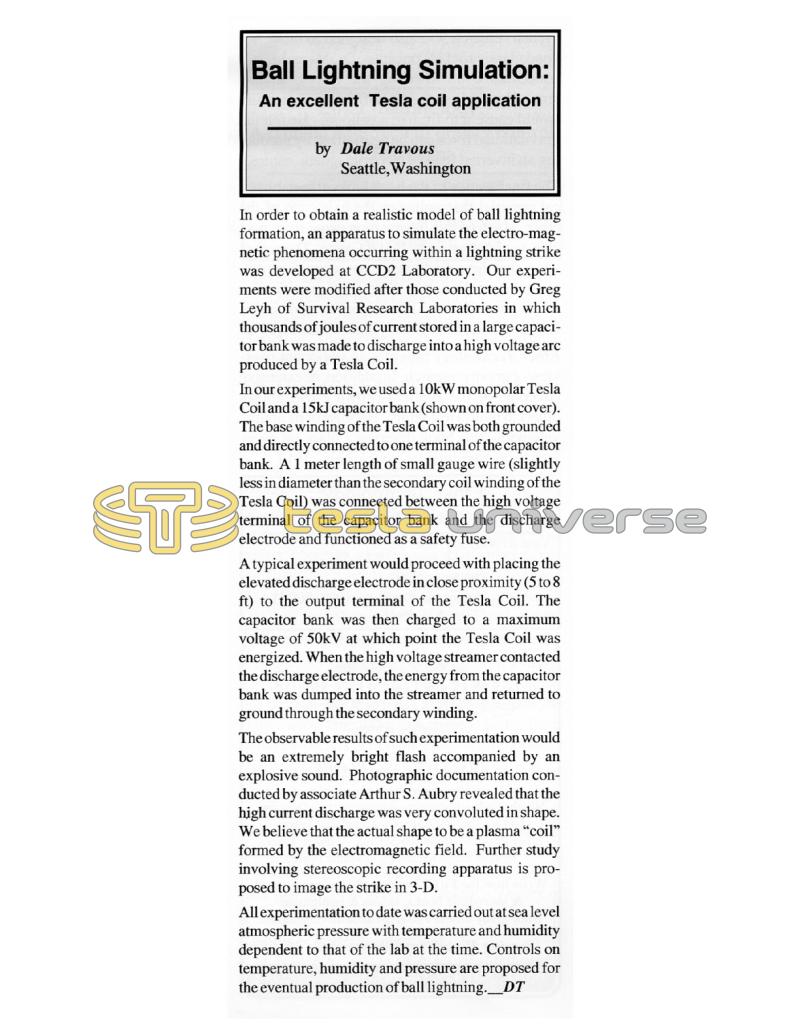
Nikola Tesla Articles
Ball Lightning Simulation: An Excellent Tesla Coil Application
In order to obtain a realistic model of ball lightning formation, an apparatus to simulate the electro-magnetic phenomena occurring within a lightning strike was developed at CCD2 Laboratory. Our experiments were modified after those conducted by Greg Leyh of Survival Research Laboratories in which thousands of joules of current stored in a large capacitor bank was made to discharge into a high voltage arc produced by a Tesla Coil.
In our experiments, we used a 10 kW monopolar Tesla Coilanda 15kJ capacitor bank (shown on front cover). The base winding of the Tesla Coil was both grounded and directly connected to one terminal of the capacitor bank. A 1 meter length of small gauge wire (slightly less in diameter than the secondary coil winding of the Tesla Coil) was connected between the high voltage terminal of the capacitor bank and the discharge electrode and functioned as a safety fuse.
A typical experiment would proceed with placing the elevated discharge electrode in close proximity (5 to 8 ft) to the output terminal of the Tesla Coil. The capacitor bank was then charged to a maximum voltage of 50kV at which point the Tesla Coil was energized. When the high voltage streamer contacted the discharge electrode, the energy from the capacitor bank was dumped into the streamer and returned to ground through the secondary winding.
The observable results of such experimentation would be an extremely bright flash accompanied by an explosive sound. Photographic documentation conducted by associate Arthur S. Aubry revealed that the high current discharge was very convoluted in shape. We believe that the actual shape to be a plasma “coil” formed by the electromagnetic field. Further study involving stereoscopic recording apparatus is proposed to image the strike in 3-D.
All experimentation to date was carried out at sea level atmospheric pressure with temperature and humidity dependent to that of the lab at the time. Controls on temperature, humidity and pressure are proposed for the eventual production of ball lightning.

